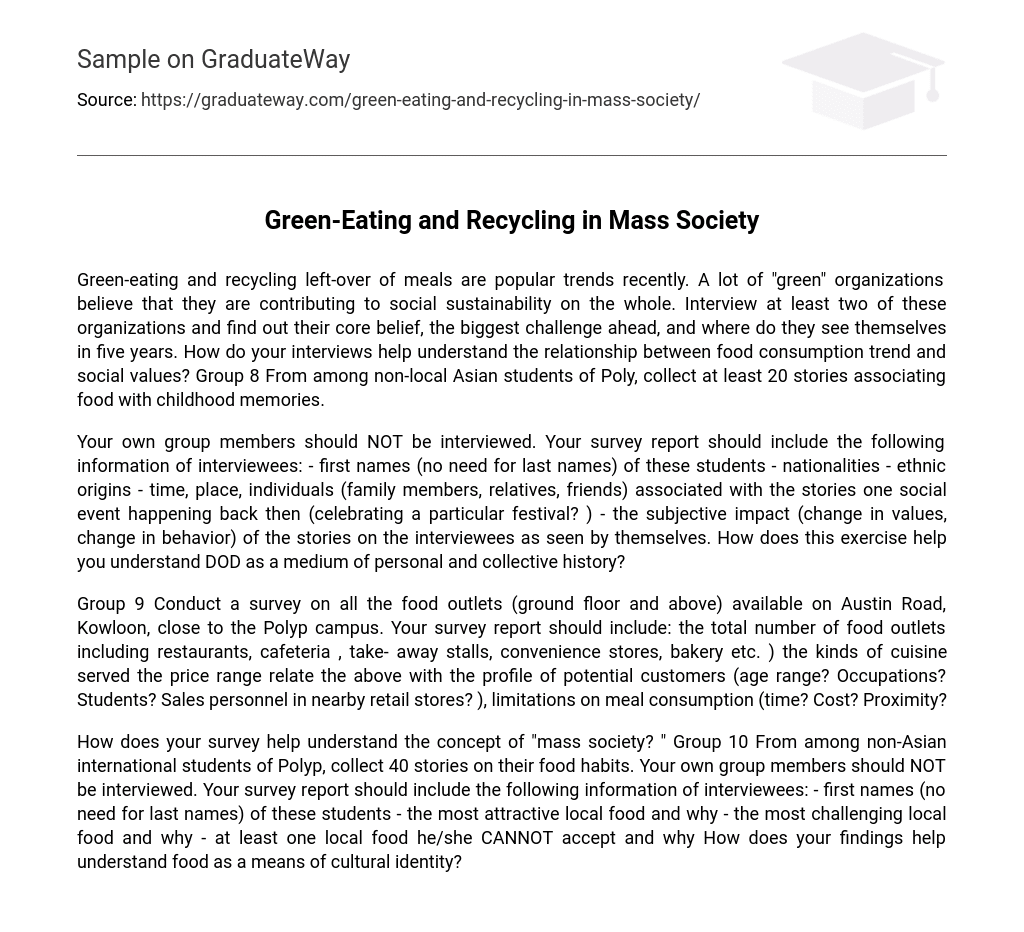Green-eating and recycling left-over of meals are popular trends recently. A lot of “green” organizations believe that they are contributing to social sustainability on the whole. Interview at least two of these organizations and find out their core belief, the biggest challenge ahead, and where do they see themselves in five years. How do your interviews help understand the relationship between food consumption trend and social values? Group 8 From among non-local Asian students of Poly, collect at least 20 stories associating food with childhood memories.
Your own group members should NOT be interviewed. Your survey report should include the following information of interviewees: – first names (no need for last names) of these students – nationalities – ethnic origins – time, place, individuals (family members, relatives, friends) associated with the stories one social event happening back then (celebrating a particular festival? ) – the subjective impact (change in values, change in behavior) of the stories on the interviewees as seen by themselves. How does this exercise help you understand DOD as a medium of personal and collective history?
Group 9 Conduct a survey on all the food outlets (ground floor and above) available on Austin Road, Kowloon, close to the Polyp campus. Your survey report should include: the total number of food outlets including restaurants, cafeteria , take- away stalls, convenience stores, bakery etc. ) the kinds of cuisine served the price range relate the above with the profile of potential customers (age range? Occupations? Students? Sales personnel in nearby retail stores? ), limitations on meal consumption (time? Cost? Proximity?
How does your survey help understand the concept of “mass society? ” Group 10 From among non-Asian international students of Polyp, collect 40 stories on their food habits. Your own group members should NOT be interviewed. Your survey report should include the following information of interviewees: – first names (no need for last names) of these students – the most attractive local food and why – the most challenging local food and why – at least one local food he/she CANNOT accept and why How does your findings help understand food as a means of cultural identity?





